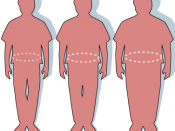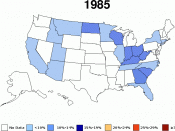What social factors have led to the increase in childhood obesity in America?
In recent history, the percentage of childhood obesity in America has increased dramatically. This is due in part to the socialization of the children. One of the main sources of socialization are the parents. Parents control food availability and influence eating habits. They also have a direct role in influencing physical activity practices and fitness levels. Because of changes in the family structure, children are more likely to experience disrupted family life than previous generations. For example, today's children are more likely to live in divorced or single-parent households with fewer siblings, have parents who work, and spend time either alone or in day care. This absence of family structure affects psychological development, eating habits, physical activity, and even weight. "From 1981 to 1997, the number of families who regularly ate dinner together decreased by 33%."
One effect of the decrease in family meals is that today's children eat more meals outside of home or without parental guidance over what to eat. Children who have more meals with their parents tend to develop healthier diets while children who eat alone or away from parents tend to be at a greater risk of obesity or malnutrition. Childhood obesity is a direct reflection of the adult problem. Children who grew up in households with obese parents are more likely to be overweight than children who grew up with healthy parents.
Another major factor in socialization of children is the media. Children tend to be exposed to more television, internet, video games, radio, magazines, music, and billboards than adults. This constant stream of images and ideas influence children's thoughts, habits, and lifestyles. Food is the most commonly advertised product during children television viewing hours. A majority of these...


